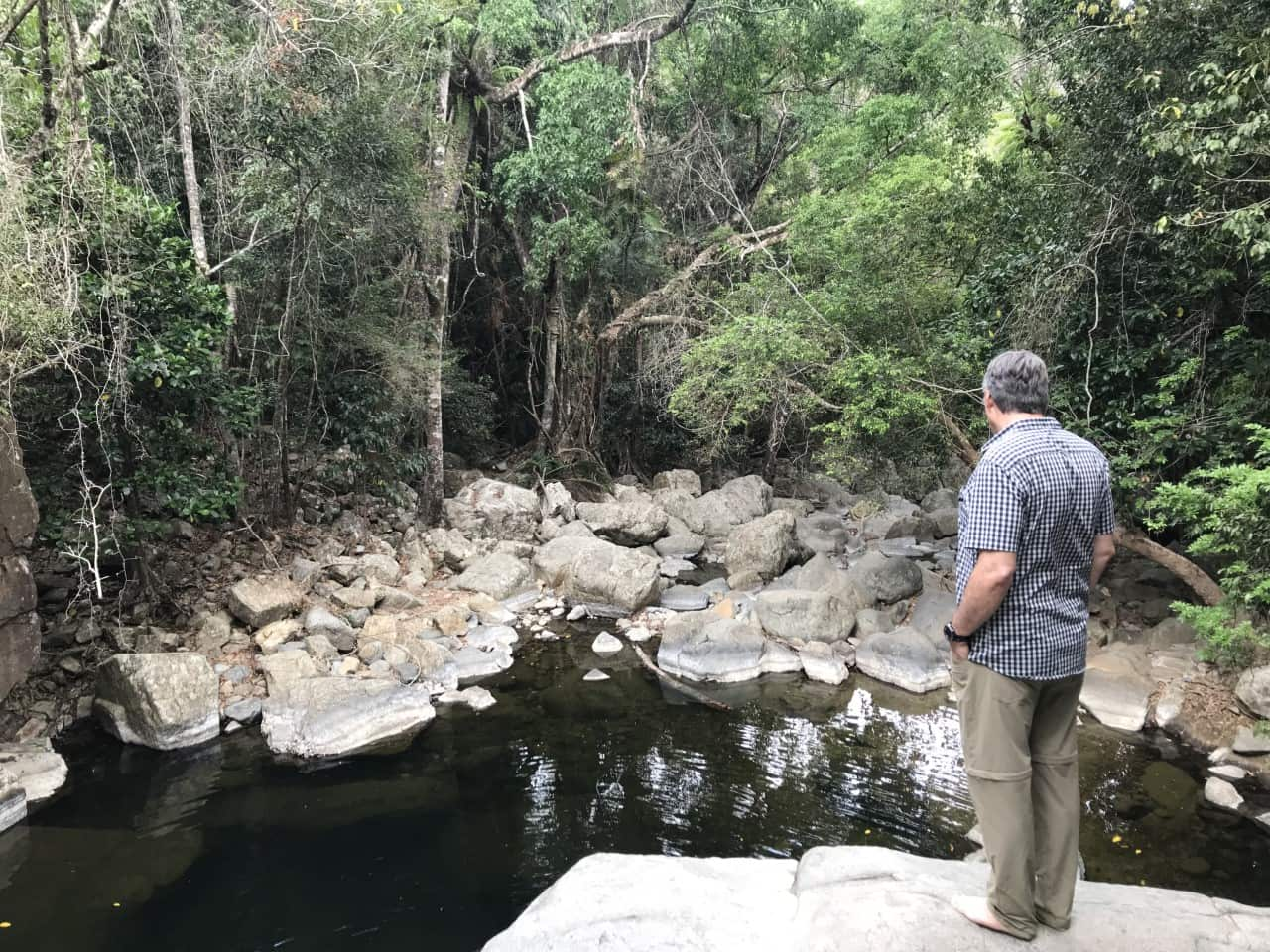The Great Barrier Reef is currently the poster child for the impacts of climate change, but just inland from the coast, Queensland’s rainforests are being hit just as hard.
Forests that were once considered too wet to burn are more increasingly doing exactly that.
Professor Steve Williams from James Cook University has been observing the Paluma Range National Park, near Townsville, for 25 years. In that time, he says the area has changed a lot.
We noticed the first change while on a drive with Professor Williams up to a viewing deck, 900 metres above sea level.
At 600 metres, the fire had burned to the outer edges of the rainforest. “That’s not really that normal,” Professor Williams says.
“That’s not really that normal,” Professor Williams says.

Source: SBS News
“We were right on the edge, so that’s kind of within the range of possibility, but it’s basically a sign of what’s been happening and a sign of what’s to come.”
The Australian Conservation Foundation says rainforests were once considered too wet to burn.
Its CEO Kelly O’Shanassy says the Paluma Range National Park rainforest isn’t the only one now affected.
“Just in the last few years, we’ve seen rainforests in northern Australia burning,” she says.
“In the last few weeks we’ve been seeing rainforest in Queensland and New South Wales burning and a few years ago we saw very wet forests in Tasmania burning.”
Some effects of climate change are less obvious to the untrained eye.
Professor Williams studies ecology and global change biology.
He says about 10 years ago he started to notice some species that used to live 600 metres above sea level were no longer there.
“And then about five or six years ago they disappeared from 700 metres,” he said.
“Now at 800 metres, they’re starting to decline.” Professor Williams says his observations are no surprise to him, as the rainforest begins to dry out.
Professor Williams says his observations are no surprise to him, as the rainforest begins to dry out.

Source: SBS News
“Maybe 10 years ago we did some fairly comprehensive modelling of predicting what the future effects will be and now they’re just all coming true, depressingly accurately, actually.”
He says the future predictions for the end of this century are even more concerning.
“The projections for the future are that we are looking at 50 or 60 per cent of all of the species in this rainforest going extinct,” he said.
The Wet Tropics Management Authority says climate change is the biggest threat to rainforests.
It released a climate adaption plan earlier this year and is calling for urgent action from governments and communities to limit climate change impacts.
The ACE says if we lose the rainforests it will severely impact the ecosystem.
“Rainforests are like the air conditioners for our planet,” Ms O’Shanassy says.
“Rainforests attract water so they attract rain for our planet.” The Bureau of Meteorology says Australia has warmed more than 1C since 1910, and eight of Australia’s top ten warmest years on record have occurred since 2005.
The Bureau of Meteorology says Australia has warmed more than 1C since 1910, and eight of Australia’s top ten warmest years on record have occurred since 2005.

Source: SBS News
The bureau’s most recent says rainfall has been above average in parts of the tropical north.
That should be good news for rainforests, but the report adds: “There is evidence from observed weather station records that a higher proportion of total annual rainfall in recent decades has come from heavy rain days,” meaning the rain is increasingly coming from single events.
Professor Williams says the rising heat and drying base of the rainforest is systematically pushing vertebrates further up the mountain.
“In this region, we’re not likely to see a particularly big change in the total amount of rainfall we get, but it’ll be more in the wet season and less in the dry season.”
“So, in other words, the dry season will become longer and drier, that’s a really big issue for a lot of the things that like continuous moisture like some of the plants and things like frogs”.
Professor Williams fears a longer drier dry season will see more fires impacting the Paluma Range National Park.
“Rainforests have been mostly considered to be fireproof, but if you get a long enough dry season that’s dry enough… and especially if you combine that with the impacts of a cyclone… then you’ve got the possibility of really severe fires going through.
“That’s a complete game-changer”.



